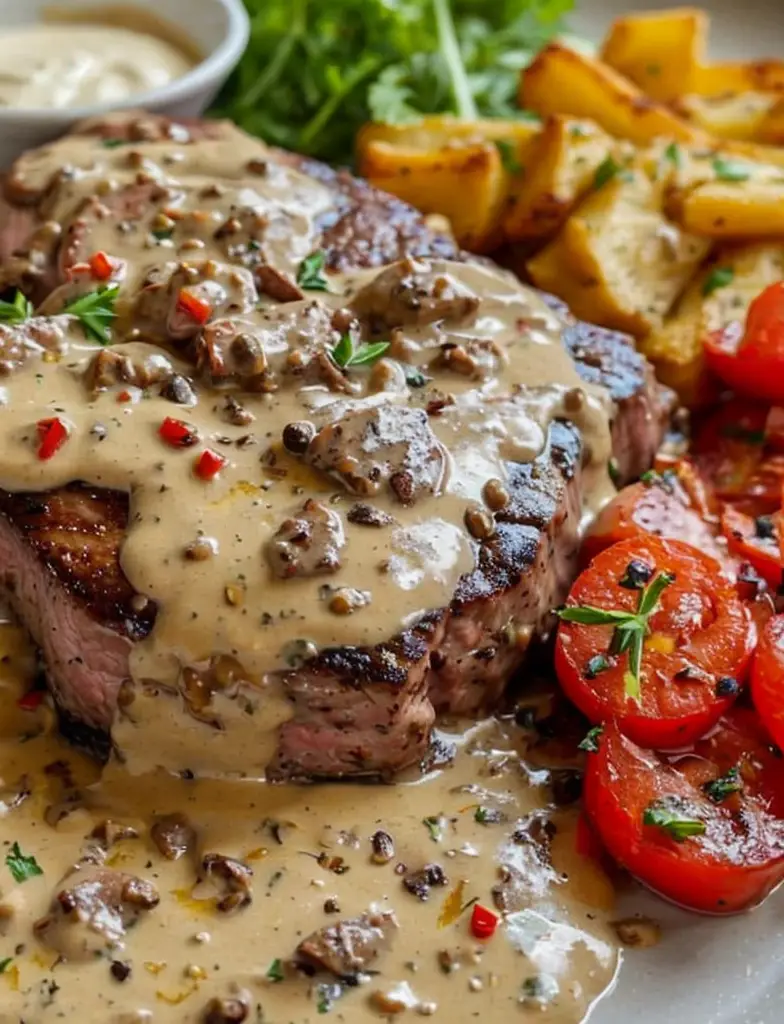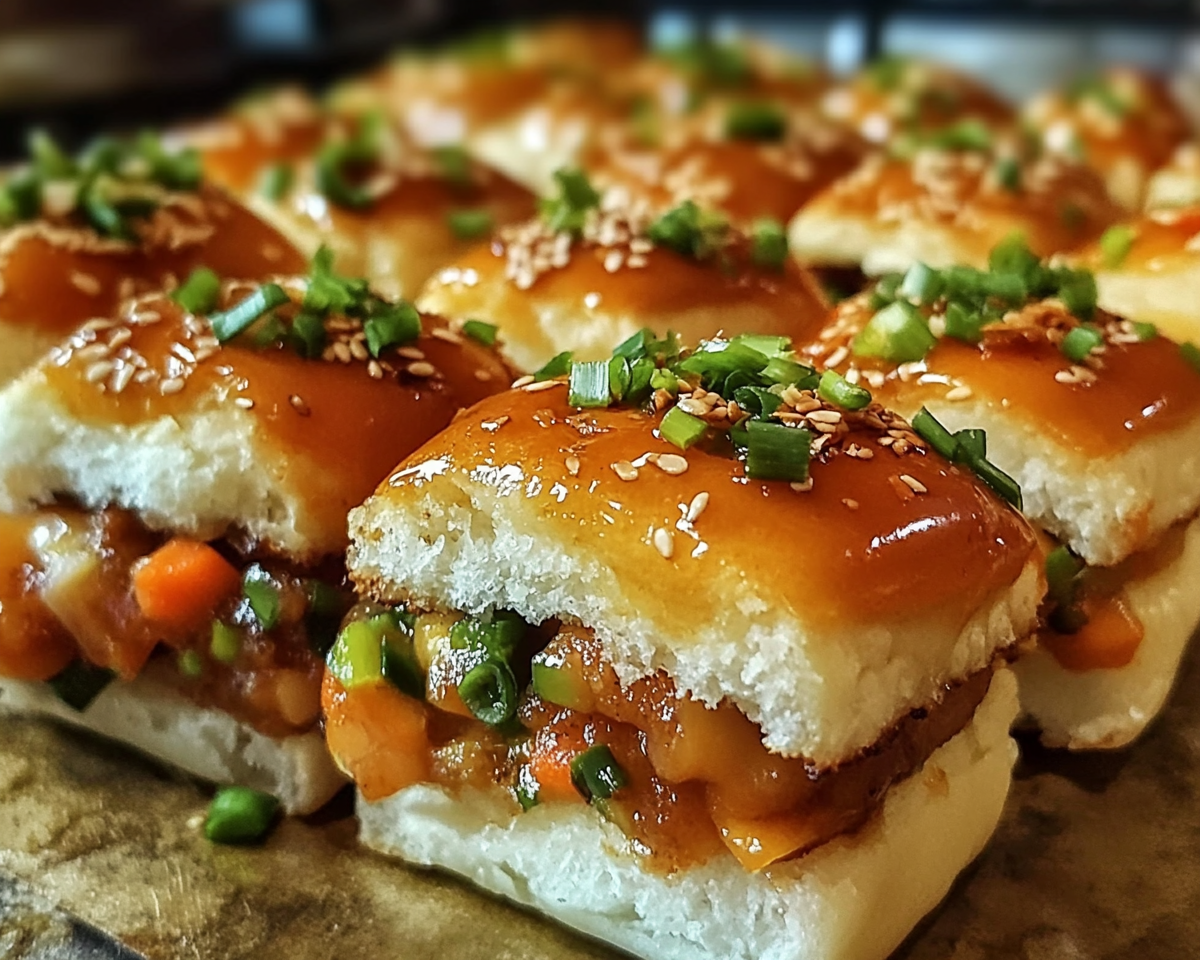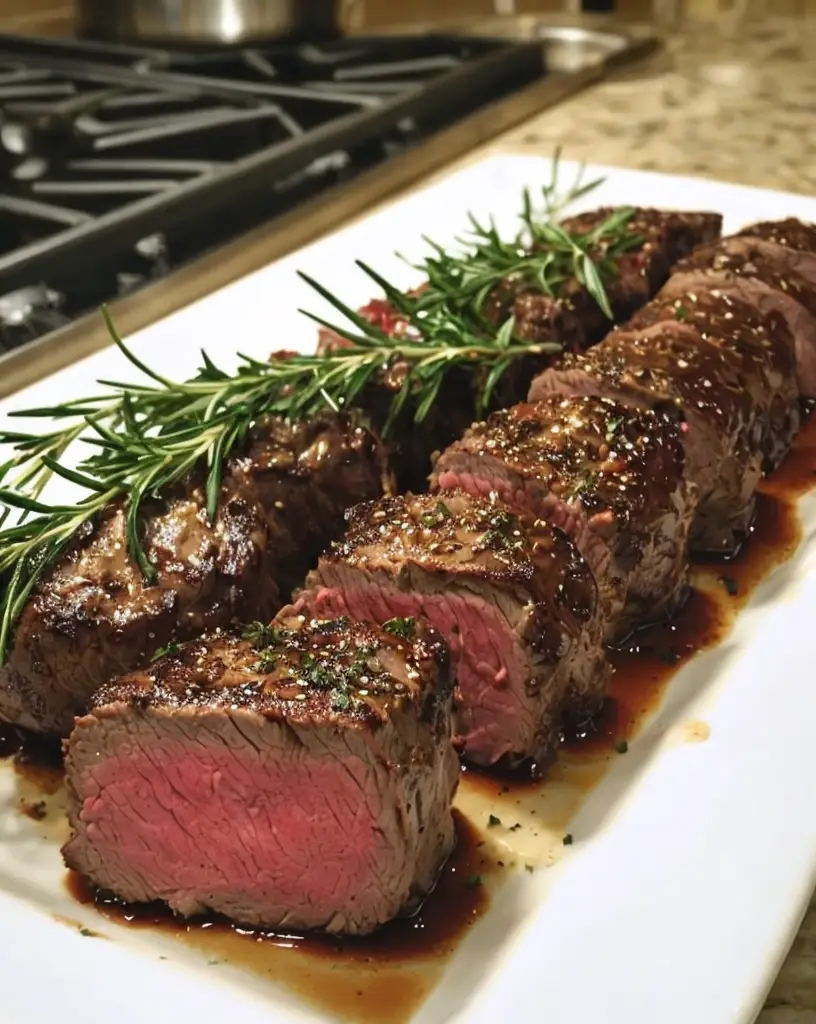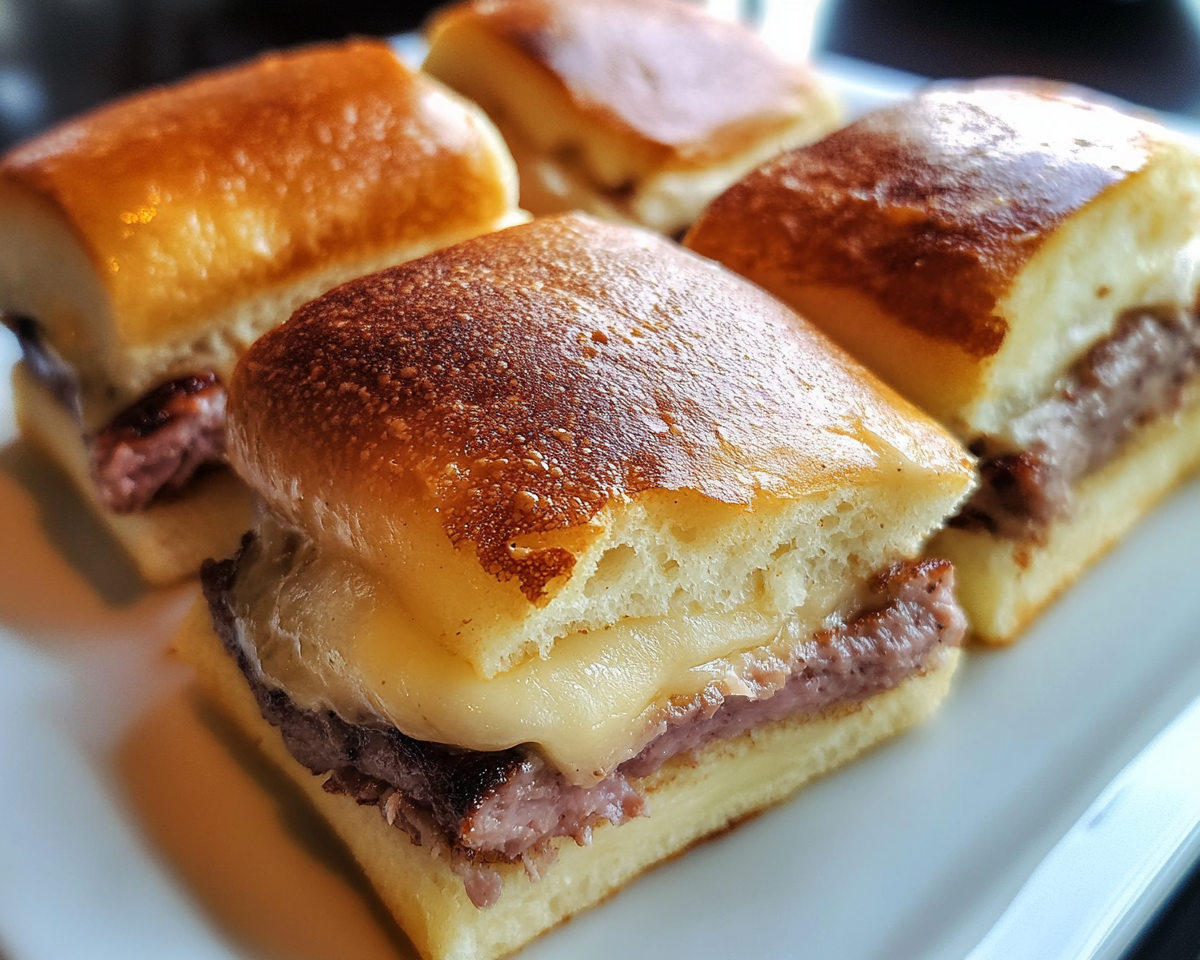Peppercorn Steak with Creamy Sauce: A Gourmet Delight
Indulge in the exquisite flavors of peppercorn steak with creamy sauce, a dish that masterfully combines gourmet appeal with the comfort of a homemade meal. This recipe perfectly balances the boldness of crushed black peppercorns and the richness of a creamy sauce, elevating your steak experience to a new level. Whether you’re hosting a dinner party or looking for a special weekday meal, this peppercorn steak promises a tantalizing feast for the senses.
Imagine the sizzling sound of premium steaks searing to perfection, filling your kitchen with an inviting aroma. The creamy sauce, enriched with hints of garlic and fresh herbs, adds a velvety touch that complements the peppery steak, creating an unforgettable taste sensation. What’s more, this dish is versatile enough to pair seamlessly with a variety of sides, making it an excellent choice for any occasion.
Quick Recipe Highlights
- Flavor Profile: Experience a harmonious blend of spicy black pepper, savory steak juices, and creamy sauce enriched with garlic.
- Texture: Enjoy the tender and juicy steak contrasted by the smoothly rich sauce.
- Aroma: The dish is dominated by the enticing scent of seared steak and the aromatic punch of pepper and garlic.
- Visual Appeal: A beautiful bouquet of textures, the black pepper’s dark specks against the sauce’s creaminess creates an inviting look.
- Skill Level Needed: Requires moderate cooking skills to achieve the perfect sear and sauce consistency.
- Special Equipment: While a precise meat thermometer and a heavy-duty skillet enhance results, they aren’t strictly necessary.
Recipe Overview
- Difficulty Level: The complexity arises from managing the perfect sear on the steak and balancing the sauce without curdling.
- Category: This recipe fits snugly into special occasion or gourmet meal categories, ideal for celebratory dinners.
- Cuisine: It draws from classic French influences, embodying the elegance of European culinary traditions.
- Cost: Estimated at medium expense, largely dependent on the quality of steak cuts selected.
- Season: Perfect as a year-round delicacy, especially during cooler months when hearty meals are more inviting.
- Occasion: Ideal for romantic dinners, family gatherings, or cozy nights celebrating at home.
Why You’ll Love This Recipe
Peppercorn steak with creamy sauce combines the robust, spicy notes of cracked peppercorns with the rich smoothness of a homemade cream sauce, offering a taste and texture that pleases every palate. The steak’s tender juiciness melds effortlessly with the sauce’s velvety texture, giving you a restaurant-quality dish right at home.
Preparation is straightforward, making this dish both a convenience for host-whiskers and a pleasure for home cooks. With most of the preparation achievable within 15 minutes and a brief cooking time of 25 minutes, this recipe provides a seamless weeknight solution that does not compromise on flavor or style.
Nutritionally, the inclusion of fresh herbs and high-quality proteins supports a well-balanced meal. By selecting lean steak cuts, consumers can enjoy the decadent taste with a mindful eye on nutritional value. The sauce, adaptable for calorie-conscious diners, invites you to manage your dietary intake while still indulging in an exquisite dish.
As a social centerpiece, peppercorn steak with creamy sauce spurs conversation and enjoyment, offering a sophisticated touch for both intimate gatherings and celebratory feasts. The recipe’s adaptability makes it a prominent feature of gatherings, loved for its depth of flavor and elegant presentation.
Thanks to local availability, ingredients are both accessible and affordable, ensuring this gourmet dish doesn’t break the bank. Whether sourcing your cuts from a trusted butcher or selecting seasonal garnishes from a local market, this peppercorn steak appeals not only to discerning taste buds but also to budget-conscious cooks seeking culinary excellence.
Historical Background and Cultural Significance
The peppercorn steak’s origins are rooted in French cuisine, where the pairing of creamy sauces with robustly seasoned meats often graces restaurant menus. Historically, the use of black pepper, once a prized spice, was reserved for noble tables, adding layers of discernment and exclusivity to its early enjoyment.
Peppercorn steak, sometimes called ‘Steak au Poivre,’ speaks volumes of its cultural importance—embodying the French culinary philosophy of balancing strong flavors with refinement. Through the centuries, this approach to steak preparation has transcended borders, becoming a beloved staple in restaurant repertoires worldwide.
As the recipe has evolved, variations have emerged reflecting regional flavors and available ingredients. In some variations, chefs incorporate local herbs or spirits to their sauces, creating unique renditions that retain the dish’s foundational excellence.
The peppercorn steak continues to showcase its adaptability, resonating through international menus. Its continued popularity highlights its inherent indulgence and versatility, allowing home cooks to bring a piece of French culinary sophistication to their own dining tables.
Ingredient Deep Dive
The humble black peppercorn, central to this recipe, carries a rich history as one of the world’s most traded spice commodities. Derived from Piper nigrum, this spice once signified wealth and luxury. Today, it’s a kitchen staple recognized for its robust pungency—a hallmark of this dish.
Nutritionally, black pepper offers more than just flavor, contributing natural antioxidants known to support digestive health and nutrient absorption. When selecting peppercorns, look for tightly packed, aromatic appearances, ensuring freshness.
Storage involves sealing them in airtight containers away from direct sunlight, preserving their pungency for longer periods. Substitutes include pre-ground pepper, though freshly cracked peppercorns yield significantly stronger flavor profiles.
High-quality beef steak, the protagonistic ingredient, deserves careful selection. Opt for well-marbled cuts like ribeye or filet mignon, recognized for their tenderness and flavor retention during frying. For the best selection, look for consistent marbling and cherry red hues, indicative of freshness.
Proper storage is essential to maintain steak quality; refrigeration extends shelf life, while freezer storage offers longevity. Substitution options include similarly tender poultry cuts or well-marinated tofu for those adapting to alternative dietary preferences.
Common Mistakes to Avoid
- Underestimating Pepper’s Power: Using too much can overpower; start with a conservative amount and adjust to taste.
- Overcooking the Steak: Keep an eye on internal temperatures to retain juiciness—targeting a medium-rare finish most commonly.
- Curdled Sauce: Monitor heat level to avoid splitting your sauce, simmering gently for an even consistency.
- Skipping Resting Period: Allow steaks to rest post-cooking, ensuring juices redistribute evenly for optimal tenderness.
- Neglecting Fresh Peppercorns: Pre-ground pepper loses potency; freshly cracked versions ensure vibrant aroma and taste.
- Rushing the Sear: Achieve depth of flavor through adequate searing time, allowing a caramelized crust to form.
- Wrong Cut Choice: Lower grade or under-marbled steaks fall short in tenderness and flavor; prioritize quality cuts.
- Inadequate Seasoning: Integrate spices generously into both meat and sauce for depth and complexity in each bite.
- Lack of Uniform Pepper Crush: Uneven pepper flakes result in inconsistent heat—smash uniformly for balanced seasoning.
- Mishandling Cream Addition: Folding cream into the sauce prematurely results in separation; add gently, just prior to serving.
Essential Techniques
Searing the steak is crucial, as it locks in juices and enhances flavor with a desirable crust. Mastery involves preheating the pan and refraining from excessive flipping, giving each side adequate time to brown beautifully.
Perfecting the creamy sauce entails maintaining a gentle simmer, allowing flavors to meld without turning oily or curdled. Incorporating the cream last maintains a smooth texture, while gradual stirring prevents clumping.
For crushing peppercorns, a mortar and pestle offer the best control, avoiding a powdery finish. Visual cues, like uniform coarseness, indicate readiness for even seasoning.
Allowing meat to rest, after cooking, ensures released juices are reabsorbed. This step is visible when juices cease pooling on the plate, affirming a succulent bite with every taste.
Pro Tips for Perfect Peppercorn Steak
When purchasing steak, seek cuts with fine marbling for enhanced flavor and tenderness during cooking. Grass-fed selections offer a distinct taste profile often preferred by steak enthusiasts.
Invest in quality cracked pepper, leveraging a grinder or mortar and pestle to activate fresh, vivid flavors that pre-ground pepper cannot match. This step is crucial for achieving authentic results.
Allow your beef to reach room temperature before cooking to ensure even searing and a perfect internal temperature. Cuts right from the fridge can cook unevenly.
When searing your steak, use an oil with a high smoke point, like grapeseed or canola. This prevents scorching and maintains flavor integrity.
In crafting your cream sauce, gradually warm the cream without boiling, fostering a lush, smooth consistency that amply coats the steak.
Opt for heavy cream or crème fraîche over lighter alternatives, achieving the rich, velvety sauce texture traditional in classic peppercorn steak servings.
Embrace fresh herbs as a finishing touch, lifting the dish’s overall aroma and taste profile—parsley or thyme work wonders atop a beautifully cooked steak.
Variations and Adaptations
Across regions, Peppercorn Steak adapts to local ingredients, demonstrating its flexibility and universal appeal. By adding touches of regional spices or spirits, cooks make this recipe their own.
When adapting seasonally, introduce specialist ingredients such as truffle in winter for a luxurious twist or replace cream with mascarpone for a rich autumnal hue.
Adapting dietary preferences, swap beef for plant-based proteins like seasoned tofu steaks, which cater to vegetarian options while maintaining culinary satisfaction.
To enhance the flavor, try alternative spice blends such as smoked peppercorns, infusing your dish with deeper, earthier flavors ideal for hearty winter meals.
Explore textural variations with additional toppings or garnishes, such as crispy shallots or toasted pine nuts, for added crunch and nuanced complexity.
Present your dish in contemporary styles, utilizing presentation alternatives like artistic plating with a splay of sauce encapsulating the steak’s exterior, inviting diners to delve in.
Serving and Presentation Guide
Plating techniques can make a significant impact on presentation, accentuating the dish’s gourmet appeal. Aim for a sliced steak fan spreading over creamy sauce layers for an elegant display.
Garnish ideas include fresh parsley or chive sprigs for added color and freshness or using microgreens for a refined culinary touch.
Traditional accompaniments such as roasted potatoes or seasonal vegetables pair wonderfully, enhancing the dish’s richness without overshadowing it.
Modern serving suggestions explore lighter sides, like a crisp salad or lightly blanched asparagus, balancing the dish’s hearty nature with refreshing contrasts.
Take temperature considerations into account, ensuring steaks rest sufficiently before serving, allowing for juicier, well-distributed flavors.
Employ portion control tips by serving 6 to 8 ounces of steak, letting sides complement the meal rather than overshadowing.
Wine and Beverage Pairing
For red wine pairings, opt for a robust Cabernet Sauvignon or a peppery Syrah; their structure complements the dish’s richness, enhancing its luxurious flavors.
Non-alcoholic alternatives like a bold, unsweetened iced black tea or a pepper-infused mocktail offer suitable harmony to complement the steak’s boldness.
Coffee or tea pairing suggestions include rich, full-bodied brews—espresso or Moroccan mint teas bring out warm undertones without overwhelming your palate.
When pairing beverages, remember to serve them at the optimal temperature—red wines slightly cooler than room temperature and teas adequately warmed.
Serving suggestions should emphasize clean, polished glassware for wines or artisanal tea cups to lend sophistication to your dining experience.
Storage and Shelf Life
For storage, tightly cover leftover steaks and sauce in airtight containers to preserve juiciness and freshness—refrigerating up to three days or freezing for up to a month.
Maintaining temperatures below 40°F in the fridge or below 0°F when frozen will ensure minimal spoilage, maximizing flavor retention.
Ensure containers are durable, BPA-free, and feature firm sealing for long-lasting freshness, reducing exposure to potential oxidization from the fridge air.
Signs of spoilage include off-odors, discoloration, or slime development—discard items exhibiting these characteristics for safety.
To reheat, gently warm steaks at a low oven temperature or in a skillet with a splash of water or broth to retain moisture while cautiously reheating the sauce separately.
Avoid microwaving steaks, as this may dry them out, affecting texture and flavor. Instead, opt for gentle reheating methods.
Make Ahead Strategies
Designating a prep timeline organizes efficient workflow when hosting, breaking tasks into manageable segments, enhancing both speed and results.
Between steps, store components like sauce and seasoned steaks separately to maintain individual textures and flavors, reuniting just before serving.
Assess quality impacts prior to long-term storage, ensuring elements like sauce may thicken and require mixing in liquids like broth or cream when reheated for optimum results.
Strategic assembly enables fluid kitchen operations, emphasizing precision while divesting efforts across various cooking tasks without hectic rushes.
Reheating techniques emphasize gentle environments that preserve flavors, ensuring diner satisfaction through uniform warmth and texture consistency.
Fresh elements such as herbs and garnishes should remain chilled separately until plating, sprucing dishes just before serving for vibrancy.
Scaling Instructions
Halving recipes benefits smaller gatherings, using proportional reductions of seasoning and cooking times to maintain authentic flavors without compromising results.
Doubling or tripling can require larger cuts or additional pans, maintaining consistent temperatures for uniform searing and sauce prep across broader volumes.
Review equipment adjustments to accommodate increased portions, spreading loads across multiple stovetops where necessary to ensure even heat exposure.
Timing modifications should consider factors like ingredient readiness and resting intervals, adjusting to larger or smaller meal needs without compromising on taste.
Factor in storage concerns when scaling, ensuring sufficient space for larger batch preparation without squeezing singular refrigerator or freezer compartments.
Nutritional Deep Dive
A macro breakdown of Peppercorn Steak highlights proteins from steak, fats from sauce components, and minimal carbohydrates, presenting a robust option for those monitoring intake.
Important micronutrients include vitamin B12 and iron from beef, alongside added calcium from cream components, providing nourishment while indulging in gourmet fare.
Health benefits feature high-quality proteins fueling muscle maintenance, while incorporating fresh herbs adds antioxidants—rounding out a balanced meal.
Dietary considerations allow modification potential, such as adapting cream sauce elements to lighter or dairy-free options, accommodating individual preferences or restrictions.
Portion awareness ensures consumers enjoy without overindulgence, achieving satiety with mindful, measured servings prolonging dietary commitment efforts.
Weight management tips foster calorie reduction strategies, adjusting rich elements without sacrificing the dish’s hallmark indulgent appeal.
Dietary Adaptations
Switching to gluten-free substitutes involves avoiding flour-based thickening agents, exploring gluten-free aternatives like rice flour for similar effects.
Dairy-free adaptations include plant-based cream alternatives, ensuring sauce maintains traditional creaminess without lactose.
Vegan adaptations substitute steak with plant-based protein options, like marinated seitan or tofu, channeling bold flavors similarly while respecting dietary choices.
Low-carb dieters can adapt by reducing serving sides high in carbohydrates, favoring non-starchy vegetable accompaniments or mixed greens.
Keto alternatives involve curating high-fat, low-carb meal compositions, emphasizing ample olive oil or butter and fatty sauces tailored to dietary regimens.
Paleo interpretations reorient depending on ingredient origins, selecting grass-fed sources and avoiding refined sauces or additives for a primal dining experience.
Low-FODMAP-aware cooks can substitute dairy-heavy ingredients with appropriate lactose-free solutions, considering digestive impact for sensitivity-conscious diners.
Troubleshooting Guide
For tough steak textures, review rest periods and ensure cutting against the grain, aiding chewability and overall enjoyment after cooking.
Balance flavors through adjustments in seasoning—overly peppery results benefit from cream enhancements or additional broth for dilution.
Address temperature irregularities by moderating cooking times and ensuring even cookware heating, fostering uniform preparation consistency.
Equipment challenges may arise from non-stick issues; use a quality cast iron skillet for ideal searing and heat distribution.
Address ingredient substitutions adeptly, preserving core integrity by judicious selection of well-matching alternatives for seamless recipe integration.
Timing concerns might signal early steps rushed or improper sequence management—consider strategic alleviation through pre-prepared components backing precision execution.
Recipe Success Stories
Community feedback shares tales of dinner table triumph, as diverse adaptation and personal touches yield unparalleled results, underscoring Peppercorn Steak’s celebrated record.
Variation successes capture inventive flair, with users swapping out meats for fish or fowl, reflecting this recipe’s inherent flexibility in action.
Adaptation stories reveal culinary journeys, connecting diners through shared enjoyment and mutual appreciation for this enduring favorite.
Reader suggestions uplift traditional interpretations, inspiring imaginative tweaks that meld time-honored taste with new culinary horizons.
Photography tips capture breathtaking images designed to inspire, illuminating artistry over plates with inviting backdrops, ensuring forever-documented moments in Peppercorn Steak glory.
Frequently Asked Questions
What cut of steak is best for peppercorn steak?
The best cuts are those with ample marbling such as ribeye or filet mignon. These ensure tenderness and a flavorful experience.
How can I prepare the sauce to avoid curdling?
Gradually heat the cream on low and ensure constant stirring when combining ingredients. Add cream as the final step to avoid heating directly.
Can this dish be made gluten-free?
Yes, use cornstarch or gluten-free flour as a thickener for the sauce.
What non-dairy alternatives work well for the creamy sauce?
Coconut milk or cashew cream can replicate the creamy texture for lactose-free adaptations.
What vegetables pair well with this dish?
Roasted asparagus, sautéed spinach, and mashed cauliflower are excellent complements.
How do I know when the steak is perfectly done?
Use a meat thermometer; medium-rare is achieved at 135°F, medium at 145°F. Allow steak to rest after for optimal results.
Why is my sauce too thin?
Extend simmering time to thicken naturally or whisk in additional thickeners such as flour or cornstarch.
How do I prevent pepper burns when searing?
Ensure window ventilation and choose oils with high smoke points. Consider moderate pepper usage if sensitive.
What wine pairs best with this dish?
A full-bodied red such as Cabernet Sauvignon or Shiraz complements the spice and creaminess harmoniously.
Can I prepare components ahead of time?
Season steaks up to a day in advance and prep sauce base without cream, adding it fresh during final reheating.
Is there a vegan option for this steak?
Yes, swap steak with marinated and seared tofu or seitan, and use plant-based cream for the sauce.
What is the best way to crush peppercorns?
Use a mortar and pestle for controlled consistency or a culinary mallet over a sealed bag for practical applications.
Additional Resources
For those interested in expanding their culinary repertoire, explore related recipes such as steak Diane or French onion soup, delving further into classic cuisine.
Technique guides offer eloquent perspectives on mastering searing, offering step-by-step visuals and seasoned advice for achieving professional results.
Ingredient information is available to deepen knowledge on spice usage, enhancing culinary consequence with applications of versatile, essential elements like peppercorn.
Equipment recommendations reference quality brands and must-haves for the aspiring home cook, providing insight into tools that make significant differences.
Seasonal variations showcase adaptability, yielding new recipes harnessing seasonal produce and trends, fortifying Peppercorn Steak’s status as a timeless choice.
Join the Conversation
Join our community of eager culinary explorers on social media, sharing your peppercorn steak creations and connecting over inspired kitchen successes.
Photography tips empower enthusiasts to capture stunning dish visuals, emphasizing innovative lighting and composition practices for impactful food presentations.
Recipe reviews provide valuable insights, hosting culinary critiques from fellow home chefs who celebrate and refine outstanding recipes collectively.
Community engagement fosters dialogue, encouraging shared culinary journeys through reader suggestions and personal anecdotes regarding this perennial favorite.
Explore recipe variations, weaving personal stories and regional traditions into a universally loved dish, celebrating Peppercorn Steak’s infinite possibilities.
The Recipe
Peppercorn Steak with Creamy Sauce
Serves: 4
Prep Time: 15 mins
Cook Time: 25 mins
Total Time: 40 mins
Kitchen Equipment Needed
- Heavy-duty skillet
- Sharp knife
- Cutting board
- Mortar and pestle or spice grinder
- Whisk
- Measuring cups and spoons
Ingredients
- 4 beef steaks (ribeye or filet mignon)
- 2 tablespoons mixed peppercorns, crushed
- Salt to taste
- 2 tablespoons vegetable oil
- 1/4 cup brandy or cognac
- 1 cup heavy cream
- 2 tablespoons unsalted butter
- 1 clove garlic, minced
- 1 teaspoon fresh thyme, chopped
Directions
- Season steaks generously with salt and press crushed peppercorns into both sides.
- Heat oil in a skillet over medium-high heat until shimmering.
- Place steaks in the skillet and sear for 3-4 minutes per side for medium-rare, adjusting time for preferred doneness.
- Transfer steaks to a plate and allow to rest.
- Lower heat to medium, add butter, and sauté garlic and thyme until fragrant.
- Pour in brandy, deglazing the pan and reducing by half.
- Add cream, whisking until combined, then simmer gently until sauce thickens.
- Return steaks to the skillet, warming and coating with sauce for 2 minutes before serving.
Recipe Notes
- For a non-alcoholic option, substitute brandy with beef stock.
- Adjust pepper quantity to preference—use less for milder taste.
- Leftover sauce is perfect for drizzling over sides like potatoes or vegetables.




